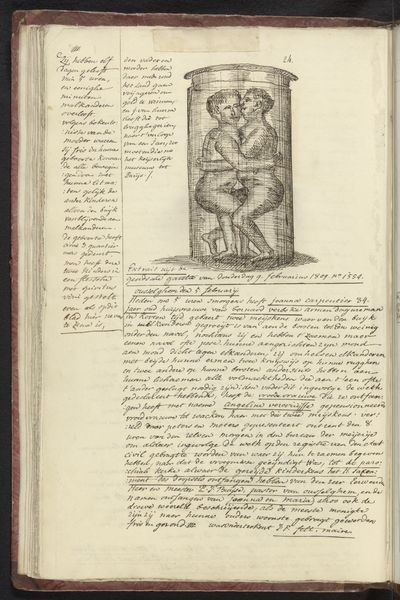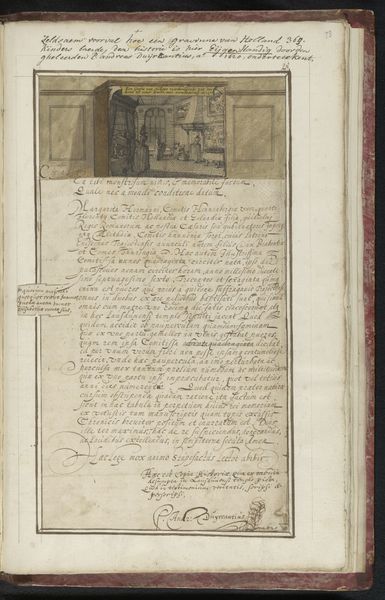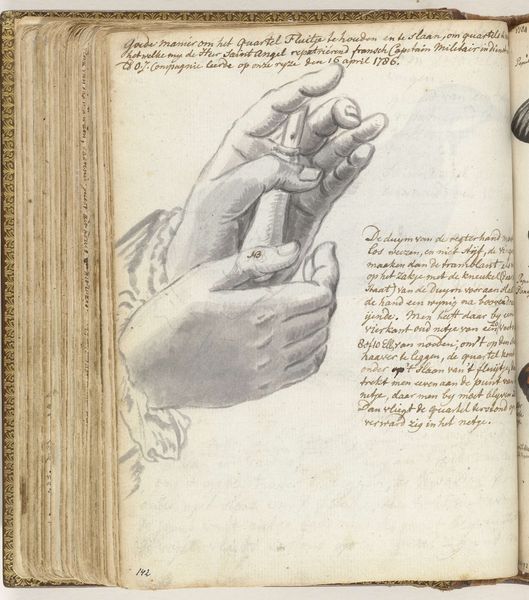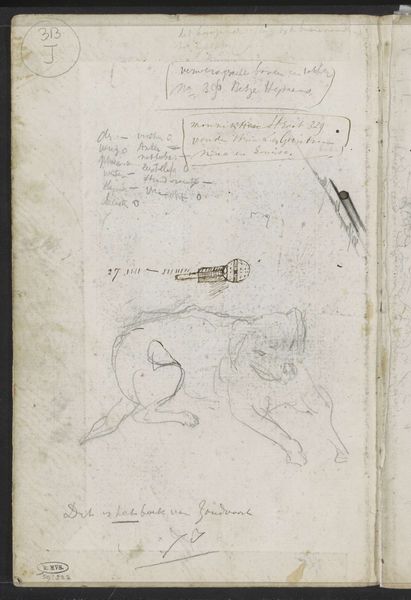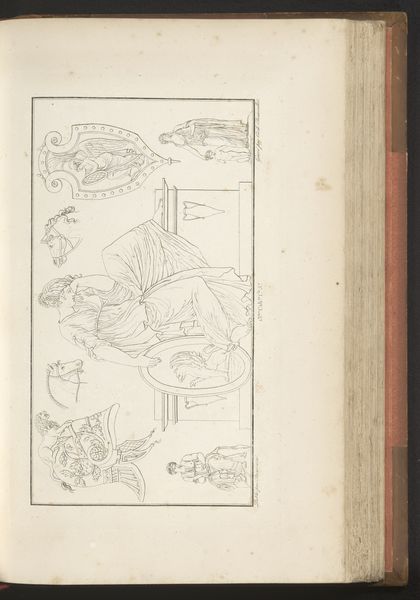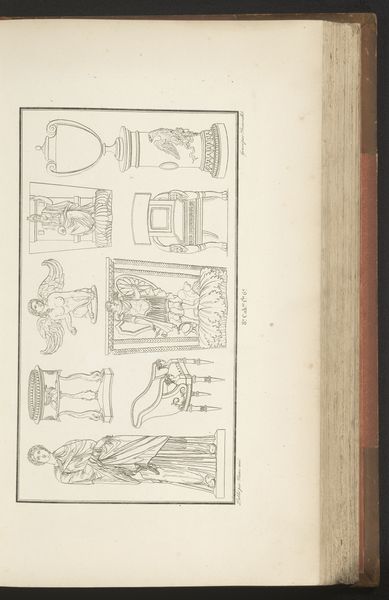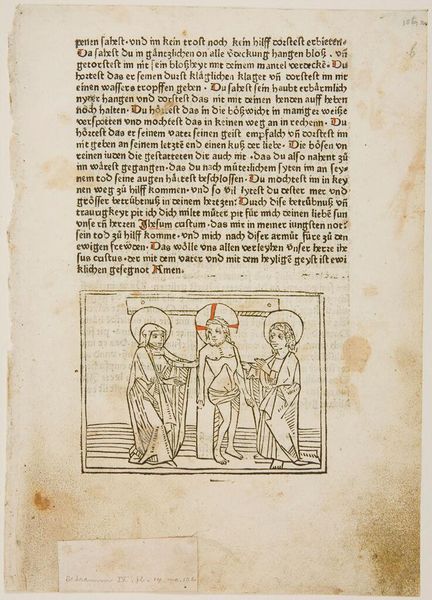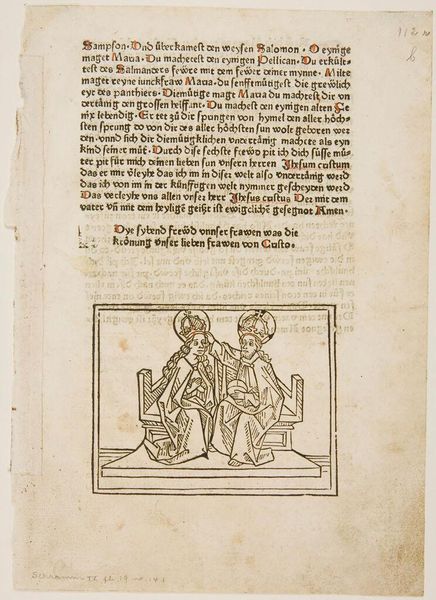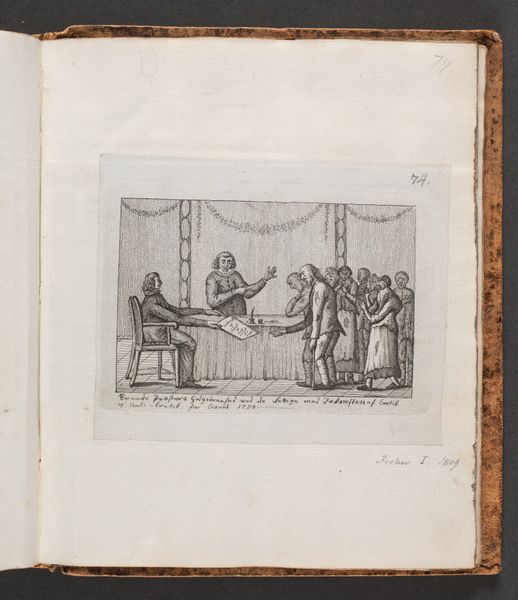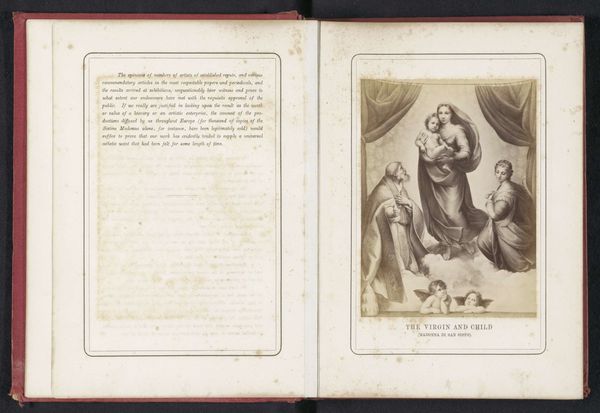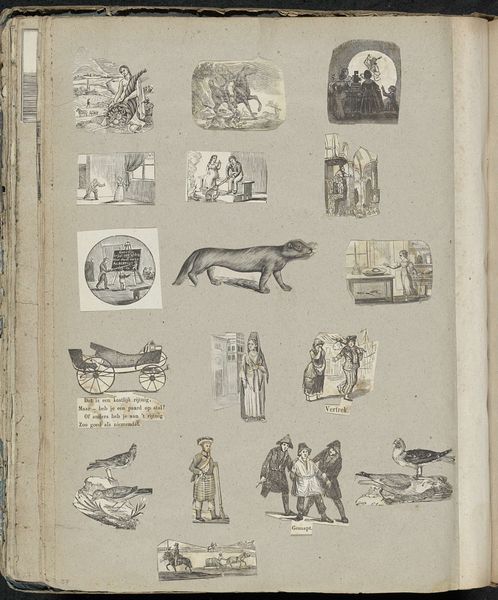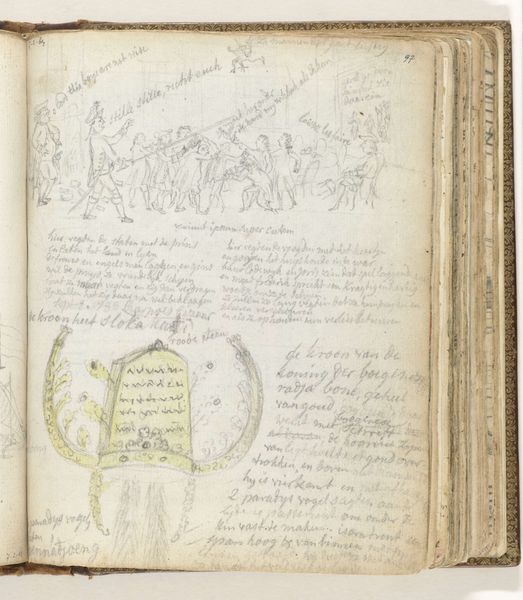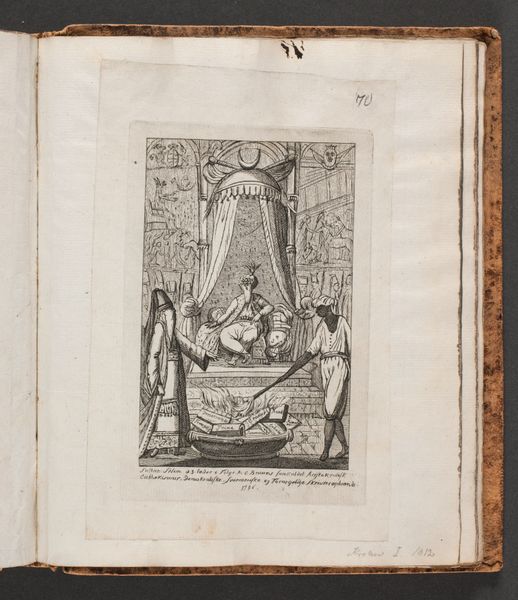
drawing, coloured-pencil, paper, ink
#
portrait
#
drawing
#
coloured-pencil
#
narrative-art
#
paper
#
ink
#
coloured pencil
#
islamic-art
#
genre-painting
#
watercolor
Dimensions: height 195 mm, width 155 mm
Copyright: Rijks Museum: Open Domain
Curator: This is a fascinating page from a sketchbook by Jan Brandes, likely created between 1779 and 1788, titled "Islamitische buiging en begroeting". It seems to combine ink and colored pencil on paper. Editor: It’s essentially an illustrated manuscript page. It feels quite documentary, like a field report of sorts. What do you see in this piece? Curator: I see a study in process. Consider the materiality: ink and coloured pencil, easily transportable for someone on the move. Brandes meticulously documented these Islamic bows and greetings; the paper itself acts almost as a record of cultural exchange and observation, shaped by Dutch colonial activity in the East. The paper and ink aren't just inert carriers of images, but evidence of the artist's labor, his means of production and engagement with the world. How does the repetitive nature of the depicted rituals influence how you understand them? Editor: That’s interesting. I hadn't thought about the repetitive element so much, but now that you mention it, the artist seems focused on codifying the actions, making it almost like a manual or an instructional guide. The materiality reflects not just observation but translation and possible control. Curator: Precisely. Think about the act of drawing itself – the repetitive motions of the hand mirroring the repeated bows of the figures. The choice of relatively inexpensive and portable materials also reflects a particular economy of artistic production. This wasn’t a grand commission, but a private record shaped by exploration. Editor: It's interesting how considering the materials used and the way the image was made changes my perception of its intent. It becomes less about a romantic view of Islamic culture and more about a very hands-on process of cultural translation through documentation. Curator: Indeed, and that translation inevitably reflects the power dynamics at play.
Comments
No comments
Be the first to comment and join the conversation on the ultimate creative platform.
